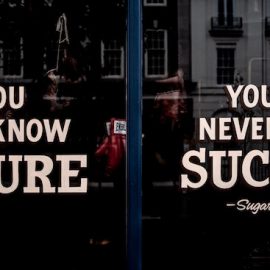

This article is an excerpt from the Shortform book guide to "Switch" by Chip and Dan Heath. Shortform has the world's best summaries and analyses of books you should be reading.
Like this article? Sign up for a free trial here .
What can you learn by examining examples of change? Can you copy success to make your own way?
When you want to make changes, you should seek out examples of change to see what works and what doesn’t. Success stories are not only inspiring, they’re instructive. Copy success when you find it.
Read more to learn how to seek out examples of change and put them to work for you.
Finding Examples of Change and Copying Success
Often, when we want to make changes, our rational selves focus immediately on the problems and possible solutions. Instead, we should be seeking out examples of change (success stories) that can inform decisions or be emulated. Essentially, we should copy success—looking for what’s already working, and doing more of that.
This exercise performs the essential function of interrupting your rational side’s analysis and reflection. While analysis and reflection can be helpful in some contexts, too often they stop the process of change completely—examining one problem reveals 10 more, and it’s easy to get mired in the details. Finding an example of change to copy is what gives your rational side a clear direction to move in. Suddenly, the way forward seems obvious—“we need to do more of that.”
Examining examples of change helps us avoid two major issues that contribute strongly to the inability to change.
1) Our rational tendency to examine problems instead of solutions means that we’re often preoccupied with the scale of the problem—therefore seeking large, complicated solutions to large, complicated problems. However, examples of change usually reveal that effective solutions can be much smaller than the problem at hand.
- For example, health researchers in West Virginia wanted to get people to eat healthier. If they’d focused only on the large, vague problem of unhealthy diets, they’d have to find ways to explain balanced diets and recommended calorie intake, persuade restaurants to show nutrition information, explain the difference between “good fat” and “bad fat,” and so on. Instead, they focused on a simple example of change—families who drank 1% milk consumed far less saturated fat than families who drank 2% milk. This “success story” led them to their simple solution: Push advertising for 1% milk. Within months, whole families had largely solved their fat overconsumption.
2) We naturally feel defensive or argumentative toward “outsider” solutions, for two reasons:
- First, we believe that solutions from elsewhere couldn’t work in the context of here. For example, many Americans feel that the universal healthcare systems that many countries have couldn’t work within the context of the United States.
- Second, we’re easily insulted by the idea that someone else knows how to solve our problems better than we do. “The Canadians think they can show us how to do healthcare better? Give me a break—ours is the best in the world.”
“Insider” success stories send the message, “That does work here,” and give us the satisfaction of having solved our own problem.

———End of Preview———
Like what you just read? Read the rest of the world's best book summary and analysis of Chip and Dan Heath's "Switch" at Shortform .
Here's what you'll find in our full Switch summary :
- Why some changes succeed while others fail
- Actionable advice for creating changes that not only succeed but stick
- The three essential elements for successful change






